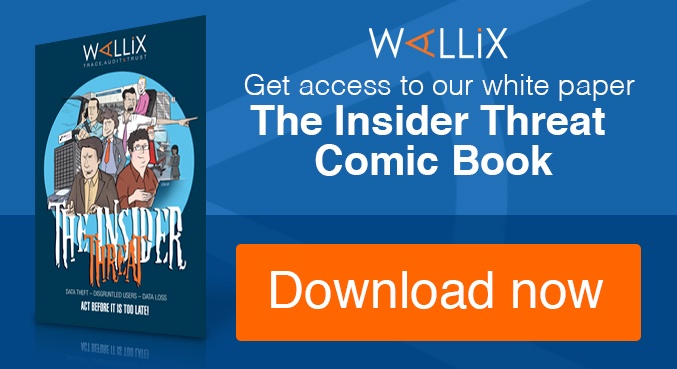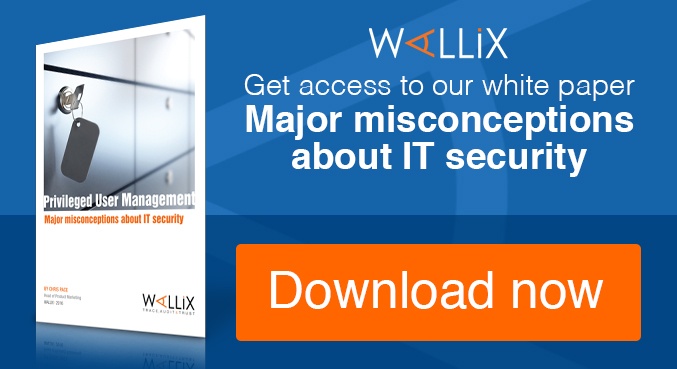International Data Corporation (IDC), the leading provider of market intelligence, advisory services, and events for the IT industry, has partnered with us to report on the importance of privileged access management (PAM) for security infrastructures in all industries.

We understand that as the technological environment has changed, the scope of needed security measures has also shifted. Enterprises can no longer rely on perimeter-based security and must reach further using privileged access management to maintain protection and control over their most precious assets…sensitive data and systems.
Privileged access management should be a fundamental element of all security strategies.
Our full report explains how:
- PAM is a fundamental element of security by using PAM as a tool to keep out malicious actors, defend against insider threats, and simplify access for genuine users.
- PAM can be a business enabler that simplifies processes while acting as a security gatekeeper.
The Basics: What is Privileged Access Management?
Privileged access management is a subset of identity and access management (IAM). IDC defines IAM as:
"Identity and access management is a comprehensive set of solutions used to identify users (employees, customers, contractors, etc.) in an IT environment and control their access to resources within that environment by associating user rights and restrictions with the established identity and assigned user accounts."
PAM is just one of the solutions that can be used in IAM. It works with your existing technological infrastructure to defend against all types of enterprise risks. IDC views session management and password management as the key components of PAM. The WALLIX solution also includes a third element, access manager. These elements have the following functions:
- Session Manager: track and monitor all the actions of privileged users within your organization. This helps enterprises meet IT compliance regulations through an unalterable audit trail.
- Password Manager: in addition to having all passwords in one central depository and never giving users access to root system passwords, the Password management module reinforce access security with mechanisms such as revocation and automatic rotation, Application-to-Application Password Management (AAPM)... This helps further to shield privileged accounts and system credentials from exploitation.
- Access Manager: provides a single point of access to users so they can easily find and access all of the applications and resources that have been deemed appropriate based on their responsibilities. Privileged users and administrators have the ability to centrally add, modify, or delete users as needed.
Working together, these PAM components mitigate risk and protect organizations from both internal and external attacks by ensuring users don’t have direct access to sensitive systems or information.
Mitigating Risk
Privileged access management helps organization mitigate all types of enterprise risks like:
- Malicious Insiders: Users who knowingly share sensitive information with those who should not have access. This can be in the form of sharing privileged credentials or handing over sensitive information. This type of malicious intent can cause damage in the sense of lost intellectual property, lost opportunities, or damaged brand reputation.
- Unwitting Insiders: These are users who are not intentionally sharing sensitive information, but may have unknowingly given a malicious outsider access to privileged credentials.
- Non-Compliance: When organizations don’t meet the necessary regulatory compliance standards mandated by their governing power, there can be consequences like hefty fines, class-action lawsuits, and mandatory breach notifications (which can have damaging affects to a brand’s reputation).
PAM mitigates all types of enterprise risks by defending against internal and external threats while meeting regulatory compliance.
By understanding the security risks enterprises face and the important components of PAM, we can begin to outline why privileged access management is important for all organizations.
Heighten Security Efforts
It is important to understand that privileged access management is fundamental to ensuring the security of all other systems and data. The moment privileged credentials are compromised, your entire security infrastructure can fall apart as a malicious user can side-step your other robust security solutions with “legitimate” activity. This is why protecting privileged credentials is so important; these credentials give users access to everything within the organization and in the wrong hands there can be devastating consequences.
None of your other security tools matter if malicious internal or external users have access to privileged account credentials.
Keep in mind, although privileged access management is a critical component of security, it is not the only solution you should be relying on. Instead, it is a key element that should be used and integrated to strengthen your existing security infrastructure and strategies.
Enable Your Business
Unfortunately, many users view IT security as a burden working against them by slowing down their machines, adding complicated access steps, and limiting their access to a point where they can’t get anything done. This complication causes many users to find ways to avoid the security controls your organization has tried so hard to put into place. When IT loses control over these environments and data, your organization can be at risk.
IDC views PAM as the solution to overcoming this issue. Privileged access management doesn’t impact usability. Instead, it allows end users to carry out their job duties and simplifies the deployment and integration process for security professionals.
End Users
PAM minimizes the impact security solutions have on users’ activities and routines. By using an agentless solution, there is less pressure on user devices so end users are more likely to actually follow security protocols. Users also have one access point for all of the applications and resources they need based on their employment responsibilities. This makes it easier for users to find what they are looking for, instead of having to shift through unnecessary information.
PAM allows your end users to easily access what they need without slowing down machines or burdening them with complicated security procedures.
Security Professionals
Maintaining control over security is one of the most important aspects of your IT team, and when users side step protocols, it makes protecting the organization that much harder. With PAM, IT can easily deploy and integrate the solution so to preserve control over all the sensitive information and systems.
An agentless privileged access management solution simplifies the deployment and integration processes.
By using a flexible and agentless solution, IT centralizes the deployment process and can handle all types of security set ups (on-premise, cloud, public, private, hybrid etc.).
Regulatory Compliance
PAM is a key contributor to meeting corporate compliance. It addresses the need to control access to sensitive information to protect individuals, while also having transparent corporate practices. Over the last few years, more and more government regulations have been put in place to ensure that corporations are compliant. If they don’t meet these requirements, enterprises could by subject to fines, class action lawsuits, and brand damage.
Some of the more well-known compliance regulations include:
|
United States |
European Union |
|
HIPAA = Health Insurance Portability and Accountability Act |
|
|
PCI-DSS = Payment Card Industry Data Security Standard |
NISD = Network and Infrastructure Security Directive |
|
NIST = National Institute of Standards and Technology |
|
PAM: Critical to Security
Overall, this report proves that PAM is the robust solution organizations need to minimize enterprise risks and meet compliance regulations. It supports the existing security infrastructure to ensure that internal and external attacks are prevented. Without privileged access management, privileged credentials in the wrong hands can negate all other security efforts. PAM is, in fact, fundamental to protecting enterprise organizations and running smooth security operations.
Want more details? Click here to download the full IDC’s vendor spotlight.
Interested in the WALLIX solution? Contact us today for more information.





